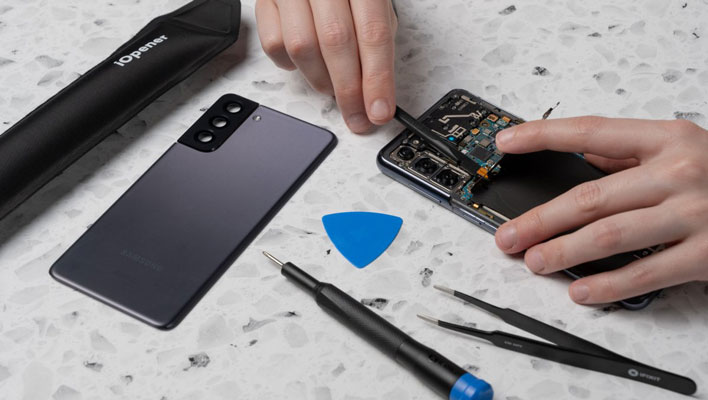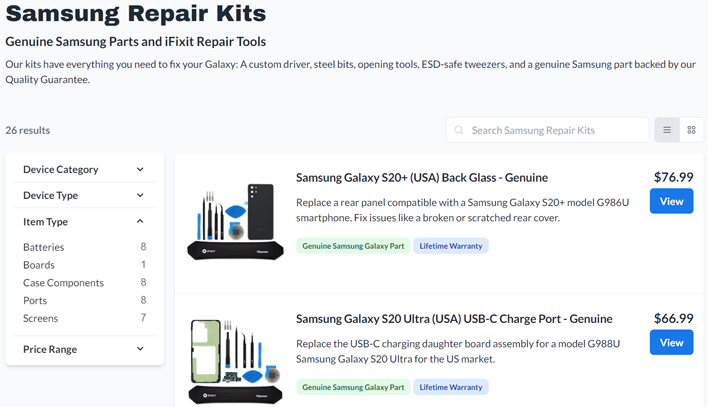Samsung And iFixit Empower DIY Phone Repair With Genuine Parts And It's Live Now

Expanding device repairability can be seen as a risky move for manufacturers. For as much good-will as it brings, there is a concern that extending the lifespans of older devices could cannibalize the sales of new devices, hurting the business’s bottom line. We feel this is completely unfounded, of course. The reality is, whenever a customer replaces their device, it creates an opportunity for that individual to change to a different brand. Consumers are much more likely to act on this opportunity when the decision to upgrade is forced on them by a bad experience like a broken screen or other hardware failure. While some percentage of buyers will stick around for familiarity’s sake, companies can increase their odds of retention in the long run by providing direct solutions to these pain points.
This kind of action is exactly what we are seeing with iFixit and Samsung’s joint effort. It creates a scenario where everyone – the customer and the company – wins. While accidents and defects can never be completely averted, this provides customers an economical solution while also hopefully generating Samsung enough revenue to be satisfied. Then, once the customer is ready to upgrade on their own terms, they will remember the experience and presumably have increased brand loyalty.
The benefits are also far reaching. As part of this program, iFixit facilitates returning used parts to Samsung for recycling. This can have positive impact on minimizing e-waste while also preserving more of the precious metals and other materials that go into each and every electronics device. Furthermore, it creates an opportunity for those with the know-how to buy up damaged devices to repair and resell them, further minimizing the ecological impact.
iFixit's offerings are first covering the Galaxy S20 and S21 families of phones, as well as the Galaxy Tab S7+ tablet. Buyers will be able to choose from standalone parts or opt for a repair kit that includes the part along with whatever tools are necessary to complete the repair. This partnership also enables a deeper level of insight to create more effective repair guides.
We do want to be clear, though. This is far from the end game of the Right-To-Repair movement. In the immortal words of Right-To-Repair advocate Louis Rossmann, give us “Schematics or Die.” If companies would release board level schematics and sell accompanying components, it would enable even more repairs to be performed economically. Yes, these repairs may require a soldering iron, a steady hand, and technical wizardry, but they are doable when the appropriate information and resources are available. Nevertheless, we like the direction the movement is headed in and hope to see more companies follow Google and Samsung’s lead.
For customers who are not as comfortable with working on their own devices, there is still good news. Samsung also recently announced a new Repair Mode is coming to select devices. Repair Mode allows users to restrict access to their personal data while still allowing a repair technician to test basic functionality when a device is sent away for repair. With today's iFixit announcement also expanding access to parts, these users are likely to have an easier time finding a repair shop nearby as well.
Top Image Credit: iFixit


